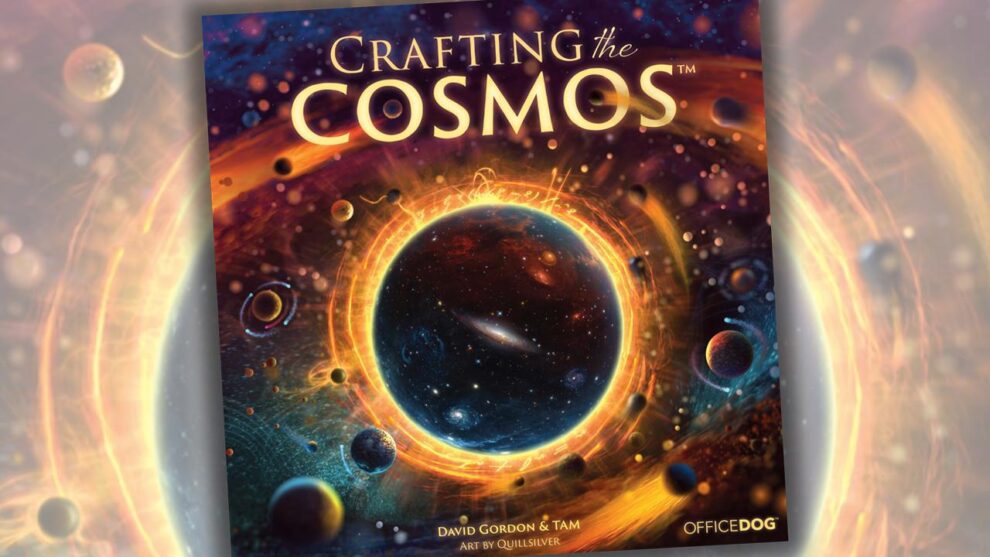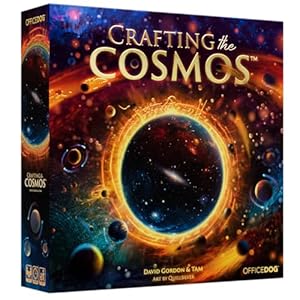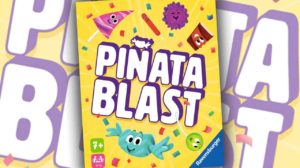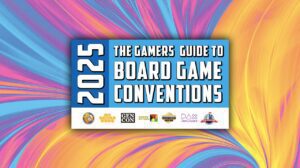Disclosure: Meeple Mountain received a free copy of this product in exchange for an honest, unbiased review. This review is not intended to be an endorsement.
Kev shrugged his shoulders.
We had just finished a four-player game of Crafting the Cosmos. The game is a new release from Office Dog, an Asmodee studio responsible for recent hits such as River of Gold and The Fellowship of the Ring Trick-Taking Game. While I was less enamored with Office Dog’s first release, Word Traveler, I have enjoyed my plays of River of Gold and I’m told I need to try that trick-taking experience ASAP.
I asked Kev for more thoughts…why the shrug? “[Crafting the Cosmos] was just OK,” he said, then the two other players who joined me for that game also shrugged their shoulders, providing a glimpse into how I eventually felt about the game. “This is the kind of game that I would probably only play on Board Game Arena, if at all.”
As it happened, I had already played Crafting the Cosmos twice on BGA to ensure I had the rules down, and immediately after we finished that in-person play, I hopped online to play it again. Some of the games I table nowadays give me that feeling, especially the games that seem to lean hard into a “multiplayer solitaire” design format. Despite the fact that I was physically sitting with three other people while playing Crafting the Cosmos at my home, it never felt like we were playing it together, if that makes sense.
For these reasons, I recommend trying this game online before dropping $80 on a physical copy.
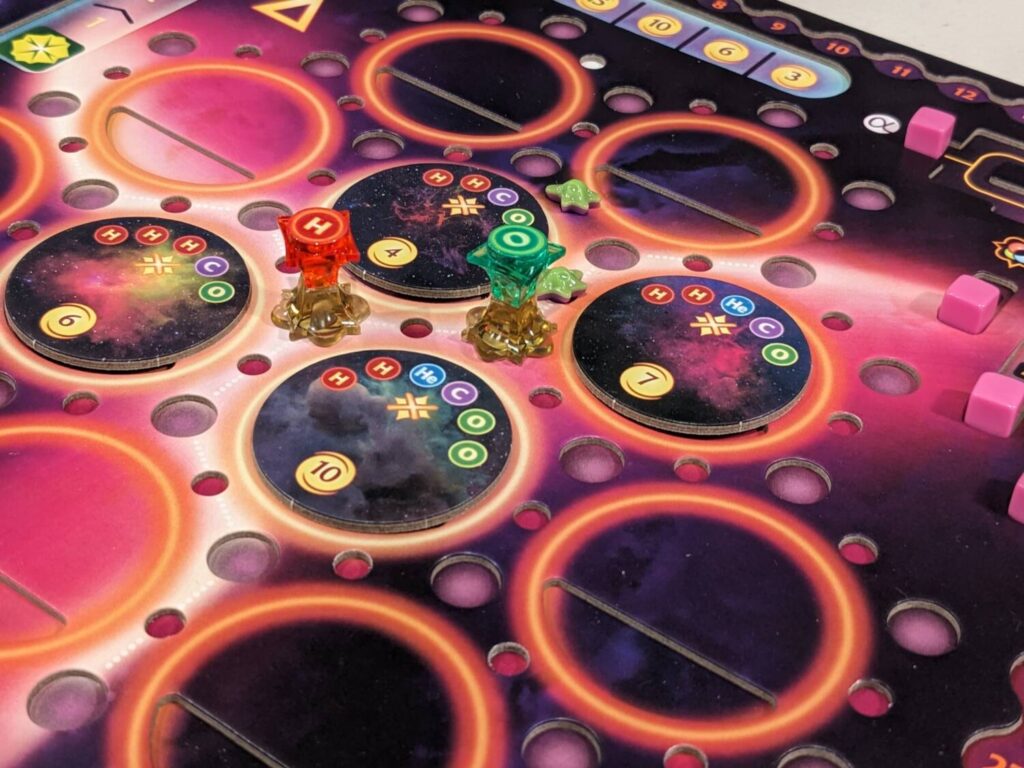
The Production is Gorgeous
Crafting the Cosmos is a 2-4 player game featuring nebulas, stars, “proto life”, marbles, and special powers unlocked as play progresses over a series of rounds. Players, in the roles of “interstellar architects”, must spend the first part of their turn moving marbles around a shared grid to gather resources. Then, during the “Craft” phase, players distribute those resources as they see fit across their player board to score points and trigger applicable bonuses.
There’s a bit more to it than that, but in reality, I think Crafting the Cosmos is appropriate as a family-weight game as long as one of the players really understands the movement restrictions detailed in the rulebook. And that’s where we need to pause, almost immediately: the BGA implementation of Crafting the Cosmos is so good AND does such a great job of educating players about these movement restrictions that I think you are best playing the game on BGA.
“OK, so is it legal for me to move this Helium star from here to here, if there’s no other star in-between?”
“You see this purple ‘proto life’ star? I’m trying to make sure I didn’t get this wrong, because I want to score the nebula over here as long as I…”
“You know, I think I got all my resources last round, but now I can’t remember if I took the bonus resource on the energy card track when it was my turn.”
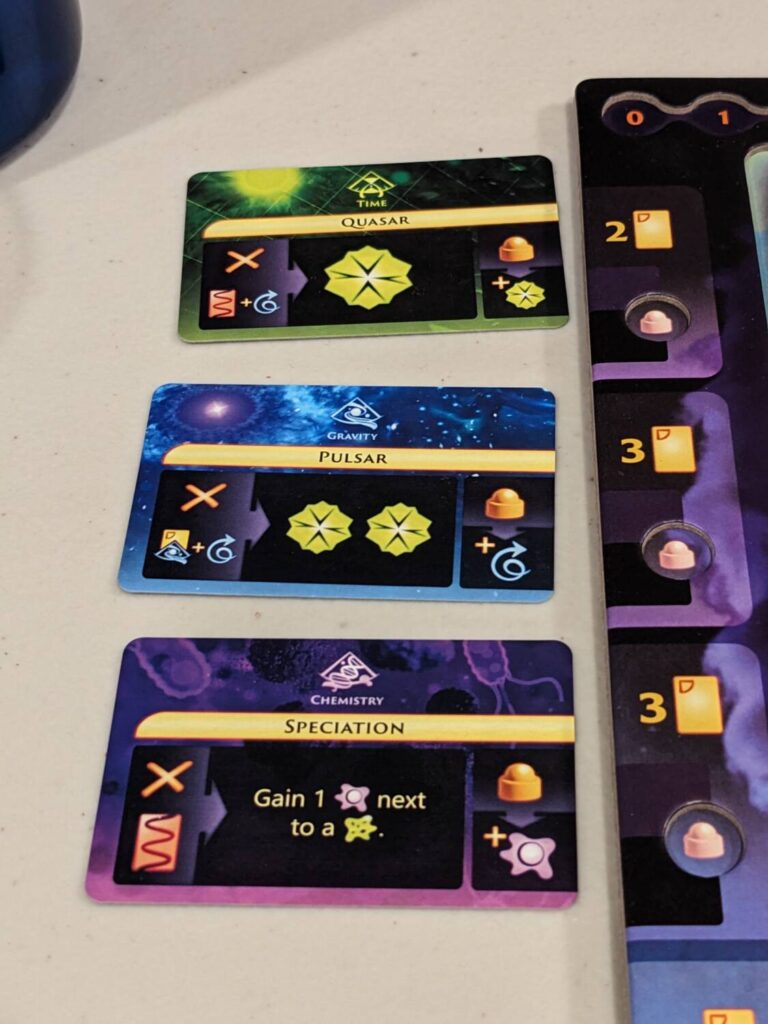
Questions like this popped up on every turn, and this from a group of players who had watched a teach video prior to our game.
I don’t think Crafting the Cosmos is difficult, but its ruleset does create a number of edge case questions. Scoring an energy track on each player’s board? Easy. Getting the right number of resources, based on where all of the main board’s energy trackers reside after each player’s actions? A little harder. Getting the movement rules just right for proto and advanced life tokens, versus stars? Also, a little harder.
And sadly, these moments are the only real chances at authentic interaction. As a design, Crafting the Cosmos is a very heads-down affair. This was quite comfortable during my three BGA plays (two async, one real-time), since I was playing with strangers and I’m not that caught up in making new friends through that interface.
But it was a little strange in person. My four-player game was filled with people making grunting sounds, thinking sounds (“huh, interesting”), and groans, but not much in the way of figuring out how to one-up an opponent. The closest we came to interacting with each other came when we had to score the goal cards starting at the end of round four, as we compared who had the most oxygen stars or stars in the Psi sector.

One Vote for Future In-Person Plays
Crafting the Cosmos is a puzzle game, one that is mildly interesting but not one that felt like it would have much variety after the first few plays. The mid- and late-game stretches were most interesting, as I tried to math out ways to score nebula while also surrounding those tiles with “advanced life” tokens so that I could get a one-time scoring bonus on each of those tiles.
Combined with the sheer lack of interaction, I am surprised Crafting the Cosmos doesn’t come with a solo mode. I think that’s the player count that would shine brightest, as a high-score challenge to help figure out the game’s system. As it is, I enjoyed moving marbles around the main grid to gather the resources I needed in a round, but over the course of four plays, each play was a little less interesting as I learned the ropes.
One thing that BGA can never replicate is the physical feel of the great bits included in the retail edition of the game. Between the star tokens, the player boards, and a couple of nice cardboard tray risers used to ensure players can always see cards from across a larger table, Crafting the Cosmos is a pretty slick game with plenty of “toy factor” that I greatly appreciated. Now, the game’s $80 retail price raised some eyebrows when we discussed our thoughts on the game after our in-person game, a price that will absolutely serve as a barrier to entry for some players.
Crafting the Cosmos was fine, but never featured much in the way of “wow” moments. I’ll continue to try out the BGA edition of the game with friends as a way to extend the journey. Designers David Gordon and TAM have been very busy over the last two years, where they co-designed both the LEGO game Monkey Island as well as Floristry. (Gordon, a regular on the convention circuit, also co-designed Finspan, the latest game in the Wingspan family.)


